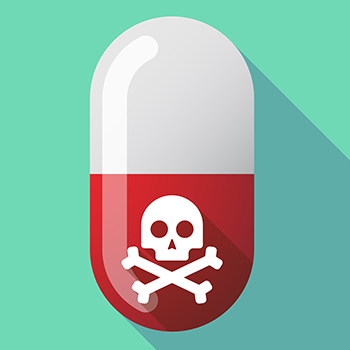DNP stands for “2,4-dinitrophenol,” an industrial chemical used in diet pills in the early 20th century that is now resurfacing. Over the past several years, deaths associated with DNP in weight-loss products have been reported.
A century ago DNP was recognized as dangerous and often deadly. In fact, the first Federal Food, Drug, and Cosmetic Act in 1938 made it illegal in oral products, describing it as “extremely dangerous and not fit for human consumption.” However, it is still made for pesticides and other industrial uses.
Virtually anyone can purchase the chemical and put it into a product. It is currently being marketed on the Internet as a weight-loss product. It takes very little for a lethal oral dose (as low as 4.3 mg/kg bodyweight, or about 350 mg for a 180 lb person), and even skin or respiratory exposure can be toxic. DNP leads to dehydration from sweating, severely high body temperature, and cell poisoning, resulting in organ failure. There is no specific antidote for DNP poisoning, and treatment is often unsuccessful.
DNP is on the DoD Prohibited Dietary Supplement Ingredients list and has been prohibited for use in sport by the World Anti-Doping Agency (WADA) since 2015. So if you see “DNP” or “dinitrophenol” on a product label, steer clear! DNP supplements are marketed almost exclusively online, so be careful what you buy.
Updated 07 March 2022

